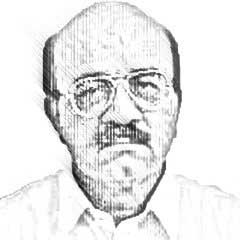Ringing bells for a healthcare emergency in Sindh, 50 HIV cases have emerged in Ratodero, Larkana, during the last three months. The majority of the affected are children. According to a local reporting source, the children are aged between eight months to five years.
About 13 children have been diagnosed HIV positive in the last 17 days. Doctors serving in the area are concerned about the situation, while also highlighting that people due to poverty are unable to avail qualitative healthcare services.
HIV is also recognised as a health concern in Pakistan with the number of cases growing. Moderately high drug use and lack of acceptance that non-marital sex is common in society have allowed the HIV epidemic to take hold in Pakistan, mainly among injection drug users (IDU), male, female and transvestite sex workers (MSW, FSW and TSW), as well as the repatriated migrant workers. HIV infection can lead to AIDS that may become a major health issue.
Pakistan is the second largest country in South Asia that stands only a few steps behind India and Nepal in terms of the HIV epidemic
In Pakistan the National AIDS Control Programme (NACP) was established in 1986-87 with a focus on the diagnosis of cases that came to hospitals, but it progressively began to shift towards a community focus. Since then different governments of Pakistan have maintained a sustained response to the HIV epidemic through a close collaboration between the NACP, provincial and AJK AIDS Control Programs, UN agencies, bilateral and multilateral donors, a consortium of NGOs and civil society organisations (CSOs), and People Living with HIV/AIDS (PLHIV) representative organisations operating at the national and provincial level.
Pakistan is the second largest country in South Asia that stands only a few steps behind India and Nepal in terms of the HIV epidemic. Despite many efforts, the HIV infection rate has significantly increased over the past few years, and in fact, the country has moved from a low prevalence to the concentrated epidemic with HIV prevalence of more than five percent among IDUs in at least eight major cities.
Other high-risk groups, such as men who have sex with men (MSM), hijra sex workers (HSWs) and female sex workers (FSWs),may reach this threshold level. Many bridging populations, totalling almost five in a million persons, are in direct sexual contact with these groups and are exposed to HIV infection through unprotected sexual activity. Heterogeneity and interlinking of high risk injecting and sexual behaviour, combined with low levels of HIV knowledge and prevention, and high levels of other sexually transmitted infections (STIs) indicate that HIV could spread rapidly to marriage partners or sex clients and result in a generalised epidemic.
Approximately, 50 HIV positive cases have been detected in three months in Ratodero, Larkana, with an increased number of children. The pathologist who heads the Peoples Primary Health Initiative in Jacobabad has revealed a news source that the blood samples of 16 children for HIV testing were sent to the PPHI Sindh Laboratory, and 13 children have tested positive for HIV. Those children are between the age of eight months and five years. Sources of Sindh Aids Control Program has informed that tests for the HIV positive children and their parents would be retaken immediately.
Often these laboratories use kits from China that have a mechanism to give false positive results. To verify these results the World Health Organisation (WHO) recommends kits will be used.
According to an estimate there were over 100,000 HIV positive people in Sindh; however, the Aids Control Program has only 10,350 registered patients who are provided treatment.
Another news source has revealed that 15 to 20 positive cases were detected at private clinics in the last three months in Ratodero. It was also reported that 20 HIV positive people have died recently. The source claims that the usage of HIV infected syringes is a major cause in the spread of infection among children.
Officials say the HIV epidemic in Pakistan remains largely concentrated among the key populations, including people who inject drugs, the transgender community, sex workers and their clients and men who have sex with men.
As of yet, there is no HIV vaccine or cure, and infected people rely on lifelong anti-retroviral therapy to stop the virus from replicating. Without treatment, HIV-infected people go on to develop AIDS, a syndrome that weakens the immune system and leaves the body exposed to opportunistic infections such as tuberculosis, and some types of cancer. Treatment carries side effects and is costly but allows infected people to be healthier for longer. The health department should take emergency measures to ban usage of unnecessary injections, and quacks must be removed from clinics and hospitals.
The writer is a retired doctor of the Sindh Health Department
